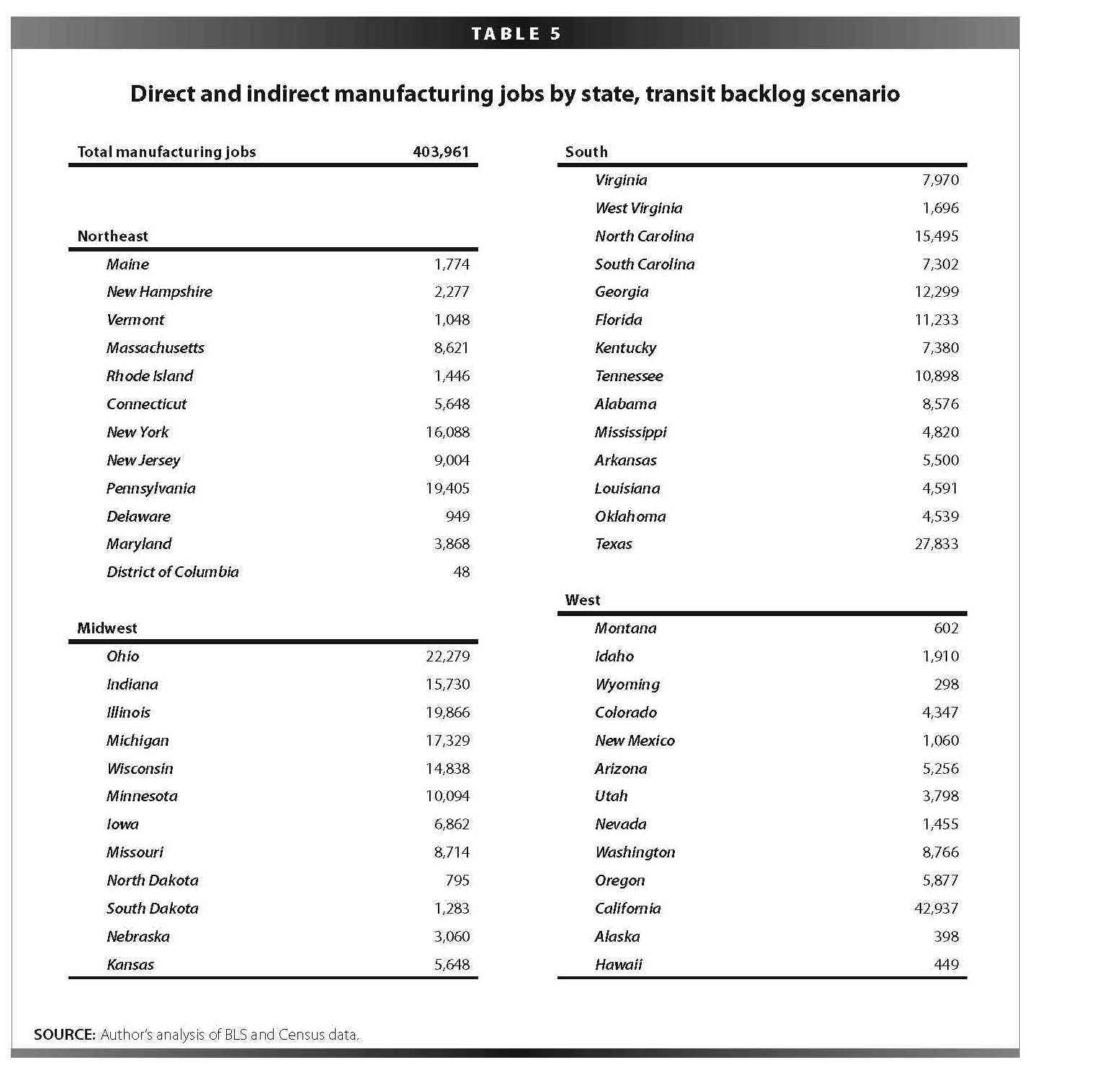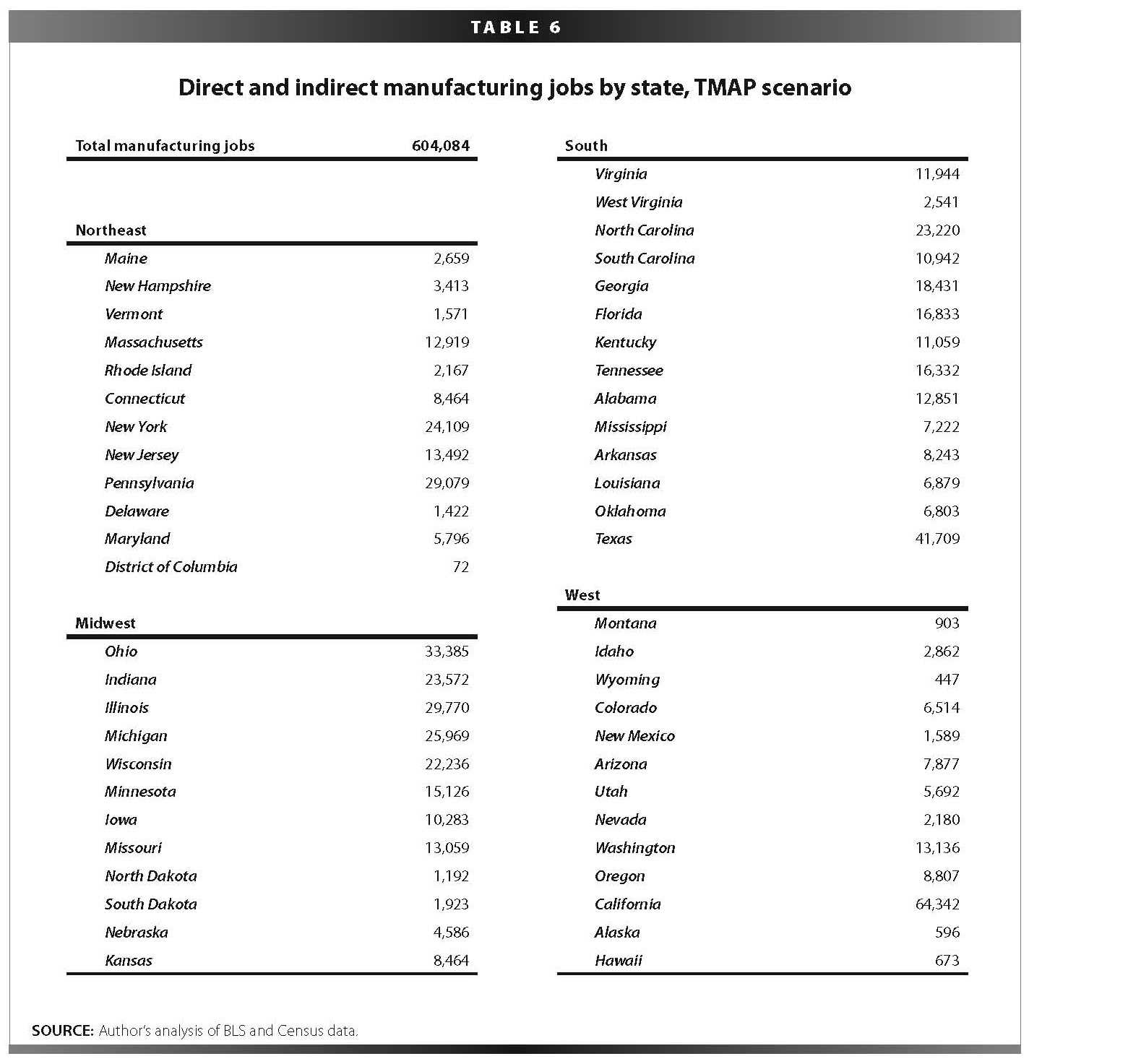ECONOMIC POLICY INSTITUTE
Issue Brief #285
By Ethan Pollack and Rebecca Thiess
Transportation investments represent an opportunity for Congress to kick the economy into a higher gear by creating millions of well-paying jobs while simultaneously boosting the condition and performance of our nation’s transportation system. The Federal Transit Administration (FTA) recently released a report estimating the total capital investment backlog for the nation’s transit systems (FTA 2010b). This FTA report led us to look at the effect on jobs—particularly in the manufacturing sector—of two scenarios for public transit and rail funding: the first scenario addresses the backlog, while the second expands the system to meet future needs. This analysis builds on our recent reports on the effects of temporary transportation stimulus and full reauthorization of transportation law with varying funding priorities (Bivens and Pollack 2010; Pollack 2010).
Findings
Transit Backlog Scenario
- An annual investment of $27.3 billion over six years into public transit capital would support 15,554 direct and indirect jobs for each billion dollars of transportation investment (or 2.5 million jobs from the entire proposal). Of those jobs, this funding scenario would generate 403,961 direct and indirect jobs specifically in the manufacturing sector (Pollack 2010). It should also be noted that this does not represent the full job impact of such investments, as it does not include jobs created from the re-spending of new employees’ incomes back into the economy.
- Overall, this type of transit investment supports jobs targeted toward the lower and middle parts of the wage distribution, which have been hit the hardest by this recession. Over half of the jobs would go to those with a high school education or less. Yet these jobs are well-paying, with only 15% falling in the bottom wage quintile, and over two-thirds falling in the middle three quintiles. This funding scenario also supports a higher share of unionized jobs (50% more than the overall economy), which often translates into higher benefits and greater job security.
Transportation Manufacturing Action Plan (TMAP) Scenario
- Investing $30 billion into public transit capital and $10 billion into intercity/high-speed rail annually for six years would support 15,524 direct and indirect jobs for each billion dollars invested (or 3.7 million jobs for the entire proposal). Of those jobs, this funding scenario would generate 605,352 direct and indirect jobs specifically in manufacturing.
- Like the “transit backlog” scenario above, the TMAP transportation investment would support jobs targeted toward the middle class, with over half of the jobs going to workers with a high school education or less, and provide jobs with wages mainly in the middle of the wage distribution. This proposal would also create a similarly high share of unionized jobs.
Funding Scenarios
Transit Backlog Scenario
The first scenario addresses the transit backlog referenced in a recent report by the Federal Transit Administration (FTA). According to its analysis, fully 29% of all transit assets are in poor or marginal condition (FTA 2010a). To bring these systems into a state of good repair, the FTA estimates that an annual investment of $27.3 billion is needed over six years, for a total of $163.8 billion (FTA 2010b). The first set of jobs estimates model the employment impacts of the six-year public transit capital investment needed to attain a state of good repair.
Transportation Manufacturing Action Plan (TMAP) Scenario
The second scenario is proposed in the Apollo Alliance’s Transportation Manufacturing Action Plan (TMAP). This proposal goes even further, estimating the employment supported through expanded federal investment to not only achieve a state of good repair, but also to expand public transit service and build out a national intercity and high-speed rail system. The report estimates the job impact of an annual investment of $30 billion into public transit infrastructure and $10 billion into intercity and high-speed rail over six years, for a total of $180 billion in public transit capital and $60 billion in high-speed rail.
About Economic Policy Institute
www.epi.org
“The Economic Policy Institute, a nonprofit Washington D.C. think tank, was created in 1986 to broaden the discussion about economic policy to include the interests of low- and middle-income workers. Today, with global competition expanding, wage inequality rising, and the methods and nature of work changing in fundamental ways, it is as crucial as ever that people who work for a living have a voice in the economic discourse. “
Tags: Apollo Alliance, Economic Policy Institute, EPI, Federal Transit Administration, FTA, TMAP, Transit Backlog, Transportation Manufacturing Action Plan








 RSS Feed
RSS Feed